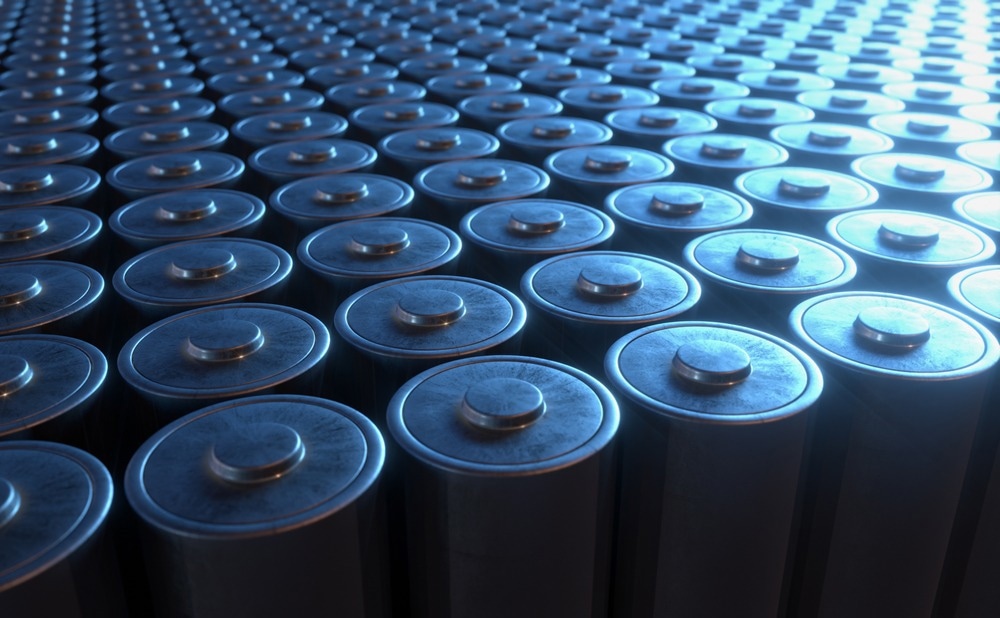Three-dimensional (3D) frameworks of carbon (C) and silicon (Si) nanocomposites have shown good potential as anodes for lithium-ion batteries.

Study: Three-dimensional network of nitrogen-doped carbon matrix-encapsulated Si nanoparticles/carbon nanofibers hybrids for lithium-ion battery anodes with excellent capability. Image Credit: ktsdesign/Shutterstock.com
In a paper published in the journal Scientific Reports, an N-doped graphene/carbon-covered silicon nanoparticle/carbon nanofiber composite was developed as a highly effective anode for lithium-ion batteries.
The nanocomposite was synthesized by different methods, including electrostatic self-assembly, surface modifications, heat treatment cross-linkage, and further carbonization.
The Importance of Lithium-Ion Batteries
Lithium-ion batteries having high specific power and energy, long cyclic life, and reasonable prices are essential for the rapid growth of portable electronic systems and electric vehicles.
The growing demand for larger energy densities in lithium-ion batteries has fueled the development of new and better anode materials.
The anode is a critical element of lithium-ion batteries and directly affects the battery's characteristics.
Limitations of Silicon Anodes
Silicon is a very promising anode material and has emerged as an alternative to conventional anode materials based on graphite. However, there are significant obstacles to the practical implementation of silicon-based materials in lithium-ion batteries.
The limited conductance of silicon-based materials results in sub-par rate performance of the anode.
Undesirable changes in the volume of silicon particles during cycles lead to breakage of the electrode material and loss of electrical contact with a current collector. This accelerates the deterioration of battery capacity, reduces cycling life, and damages the battery cells.
At potentials of 1V or less, a common electrolyte produces an SEI (solid electrolyte interface) on the surface of silicon. When the volume changes, the SEI could fracture and expose silicon particles, forming additional SEI on the exposed silicon surface.
The SEI film continually raises the thickness of the silicon layer. Soon, the layer covers the holes of the electrode, blocking the electrons and lithium ions from passing through. This causes a rise in impedance and a reduction in conductance, which ultimately affects the cyclic stability of the battery.
How Can Graphene Help?
Silicon nanoparticles may shorten the transportation path of lithium ions while maintaining volumetric changes over a cycle.
The remarkable qualities of graphene, including excellent conductivity, chemical and thermal stability, and large specific area, make it an ideal encapsulation material in the fabrication of lithium-ion batteries.
Graphene-based silicon/carbon composites may reduce the volumetric changes of silicon nanoparticles and produce a stable SEI layer. It can also enhance silicon nanoparticle's electrical conduction and lithium storage capacity.
Voids generated by vacancy defects in graphene also create pathways for ion transport, increasing graphene's permeability to ions and improving reactivity and ion diffusion.
The most frequently used precursor for graphene in the fabrication of graphene nanocomposites is graphene oxide (GO). Nitrogen (N)-doped reduced graphene oxide (N-doped rGO) may significantly enhance graphene's electrolytic and physical characteristics.
Important Findings of the Study
Electrostatic interactions with amino and carboxyl groups, hydrothermal processes, and carbonization were the techniques used in this study to effectively enclose silicon nanoparticles in nitrogen-doped carbon layers consisting of graphene and MFR base layers.
The carbon nanofiber and nitrogen-doped graphene/carbon layers increased the electrical conductivity of the anode material and successfully lessened the volumetric changes in silicon during charge/discharge cycles.
The silicon nanoparticles encased by the carbon layer successfully decreased direct engagement with the electrolyte, forming a stable SEI layer.
The carbon nanofiber connected the silicon nanoparticles encased within the carbon layer, protecting against fracture and exfoliation of the silicon nanoparticles, thereby retaining the integrity of the anode structure.
Nitrogen-doped graphene successfully introduced graphitic N, pyrrolic N, and pyridine N, creating additional defects and vacancies in the graphene structure. This produced more effective transmission pathways for lithium-ion intercalation.
The surface modification of silicon nanoparticles increased their dispersibility and the connection between the silicon nanoparticles and the nitrogen-doped carbon layer.
A uniform distribution of silicon nanoparticles in the solution developed, minimizing aggregation of graphene and silicon nanoparticles.
The stable three-dimensional network structure consisting of silicon nanoparticles, carbon nanofibers, and carbon films decreased the transportation distance of ions and promoted electron and ion transmission, which ultimately increased the electrode conductivity.
The developed electrodes demonstrated outstanding rate performance and cycle stability and may be used as a benchmark for developing anode materials for lithium-ion batteries.
Reference
Cong, R., Jo, M., Martino, A., Park, H.-H., Lee, H., & Lee, C.-S. (2022). Three-dimensional network of nitrogen-doped carbon matrix-encapsulated Si nanoparticles/carbon nanofibers hybrids for lithium-ion battery anodes with excellent capability. Scientific Reports, 12. Available at: https://www.nature.com/articles/s41598-022-20026-9
Disclaimer: The views expressed here are those of the author expressed in their private capacity and do not necessarily represent the views of AZoM.com Limited T/A AZoNetwork the owner and operator of this website. This disclaimer forms part of the Terms and conditions of use of this website.